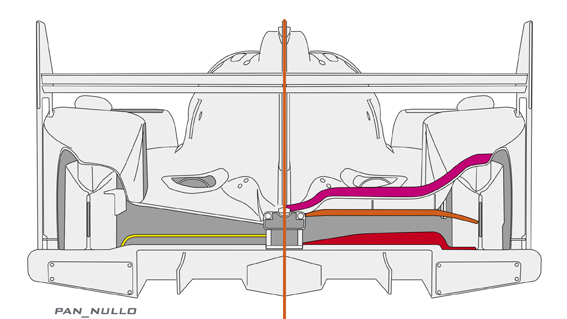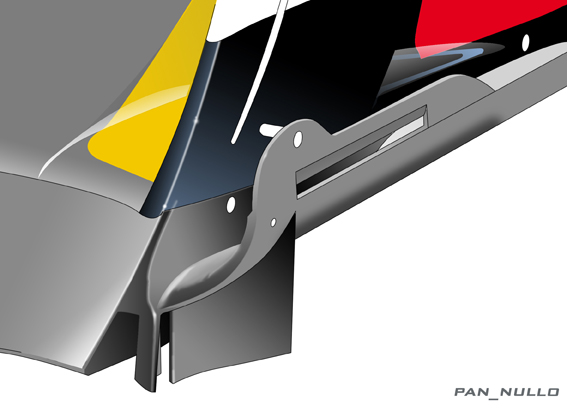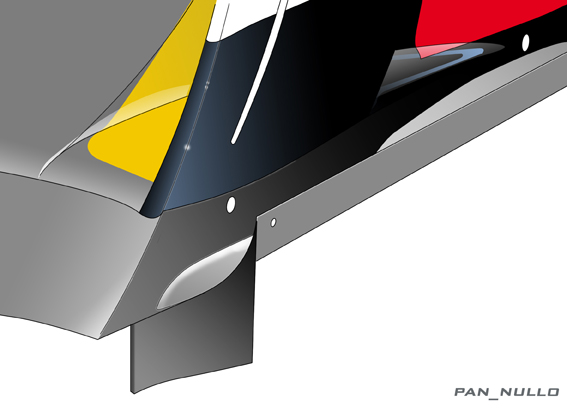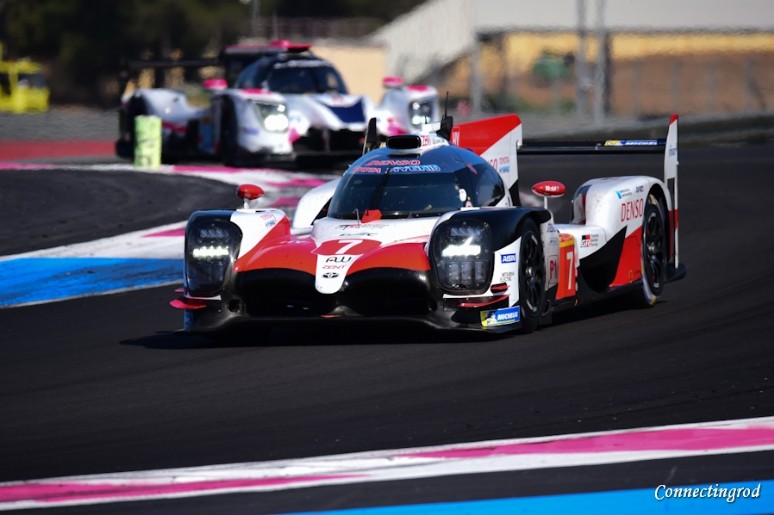13/04/2018 -
WEC Superseason 2018/2019 is about to get started at Spa Francorchamps during first weekend of May.
30 hours collective testing at Paul Ricard, high tech racing circuit, has clearly outlined Toyota TS50 as very competitive package that with the addition of great reliability shown is to be considered as the fastest car.
1’32”662 best laptime with top speed at 347,3 km/h on Mistral straight are very impressive numbers.
The program has been completed with a total of 1002 lap, most of them in low downforce configuration, focusing on the needs for Spa and Le Mans.
Different area of the car has been developed increasing the high level of detailed design of aerodynamic configuration.
Side surface of front fender are as usual completed with dive plates designed to generate additional downforce and trimming the aero balance front –rear. Main scope of these well known appendages is to generate downforce using the high pressure area at front fender nose, increased by the proper angle of attack.
Smaller total surface of dive plates and their lower angle of attack is evident comparing low downforce configuration (left) with right.
Additional beam wing over the front splitter pressure side indicated use of downward airflow direction to generate extra downforce with low drag penalties due to high aspect ratio of the wing.

Toyota TS50 - details of Low Downforce (left) vs, High Downforce appendages
Increased downforce generated by the dive plates requires vortex control at their trailing edges to keep reasonable downforce/drag ratio. Small vertical side plates and curved trailing edge are tricks to optimised this effect.

Toyota TS50 - details of curved trailing edge and side plates on high Downforce (right) dive plates
Rear view of the car outlines visible differences between high (right) and low downforce configuration. They are not limited to added appendages, as top bodywork shape is also interested. Low downforce configuration shows a thinner internal flow channel, with reduced vertical size on centreline, between tail bodywork and top rear diffuser. High downforce design use extended vertical nolder across entire tail bodywork width as well as above diffuser.
Beam wing connecting rear crash cone to fender trailing edge is generating additional downforce by upwash induced on rear airflow. All these devices are virtually increasing the curvature of the surfaces at the back of the car generating more downforce.

Toyota TS50 – High downforce configuration with nolders on tail, diffuser and beam wing (right)
Detailed view of the beam wing and vertical turning vanes to direct the flow over the nolder on top of rear diffuser.
Wing is twisted and tapered across the span, optimized according to local flow.

Toyota TS50- Beam wing with turning vane below rear bodywork on HDF configuration
Low downforce configuration use short chord slat over the rear diffuser exit with span of the wing limited to the size of underbody tunnel. The effect is to blow the flow increasing diffuser suction, with limited addition drag.

Toyota TS50 - Slat over rear diffuser exit
Wake separated behind front wheel, intense vortex running on tyre external side closed to ground, known as squirt vortex, creates a delicate area that need to be properly addressed in order to direct vortex along floor ahead of rear wheel.
Part of this complex airflow is running upwards along the side of fender behind the front wheel, while the squirt vortex is running on side of tyre feeding the underfloor.
That’s why this area of the car has been more and more refined with turning vanes, vertical fins with slot to permit flow to blow through and “correcting” vortex core path.

Toyota TS50 - Complex configuration of front wheel rear wake appendages

Toyota TS50 - Simplified configuration of front wheel rear wake appendages








